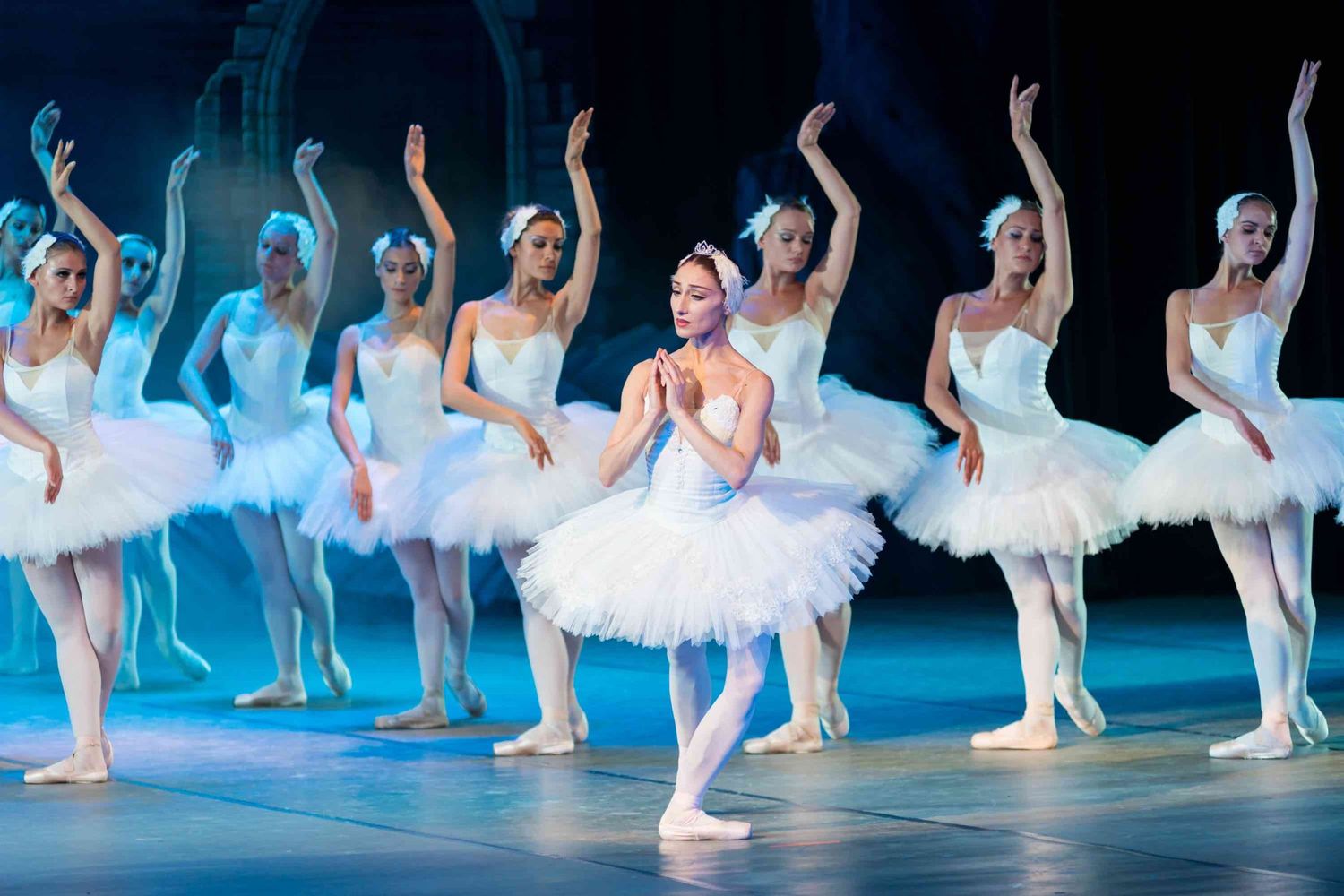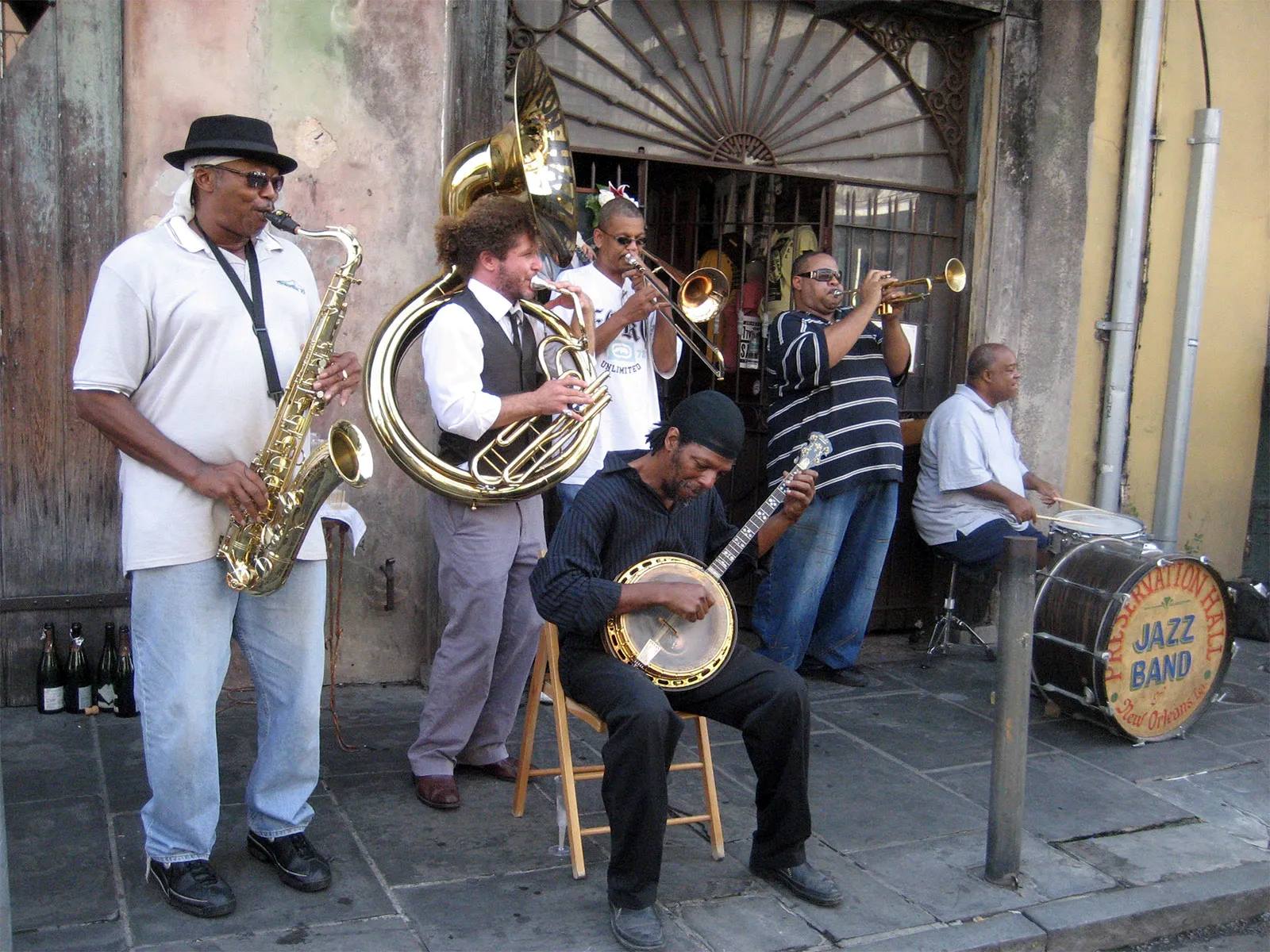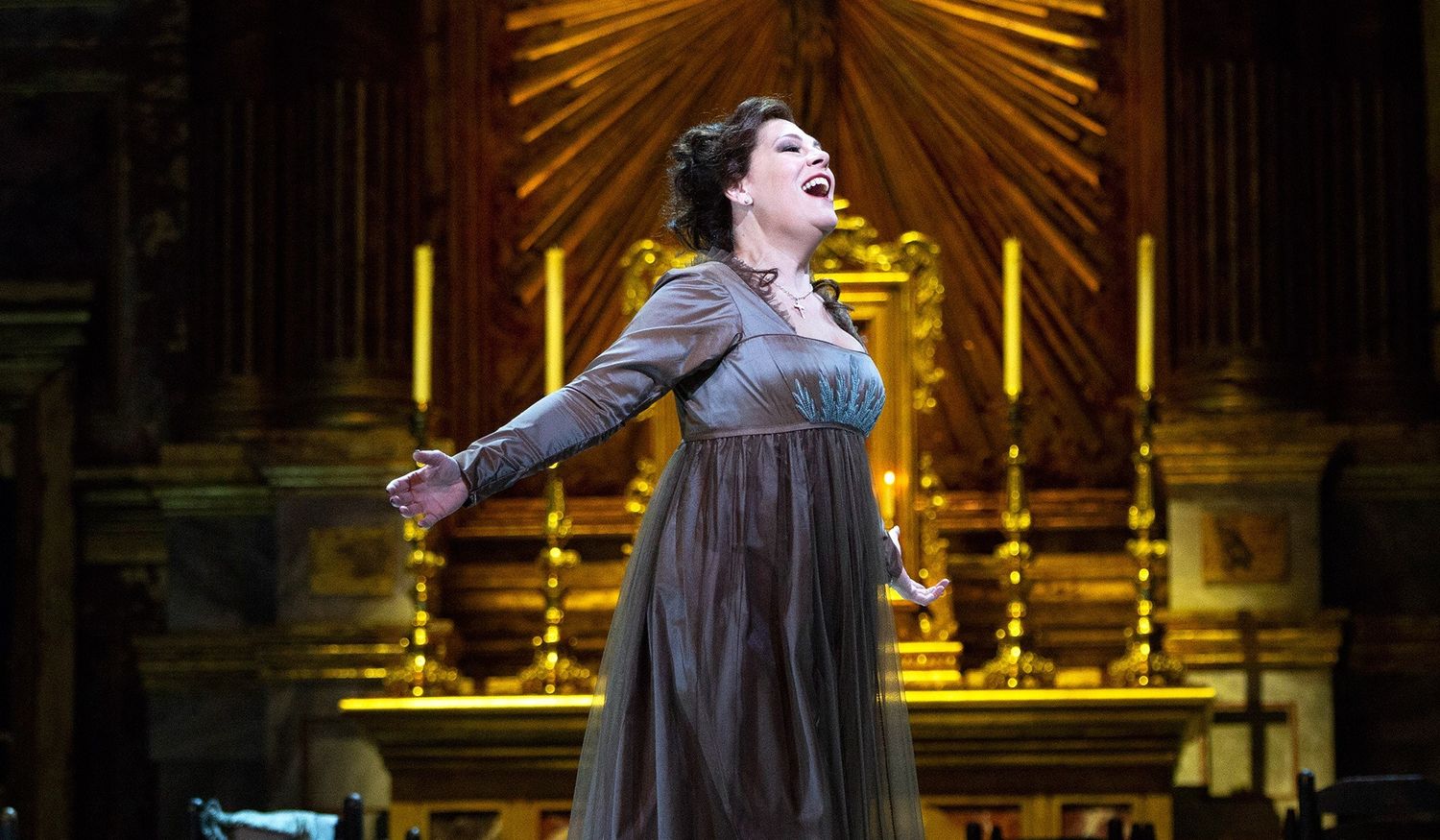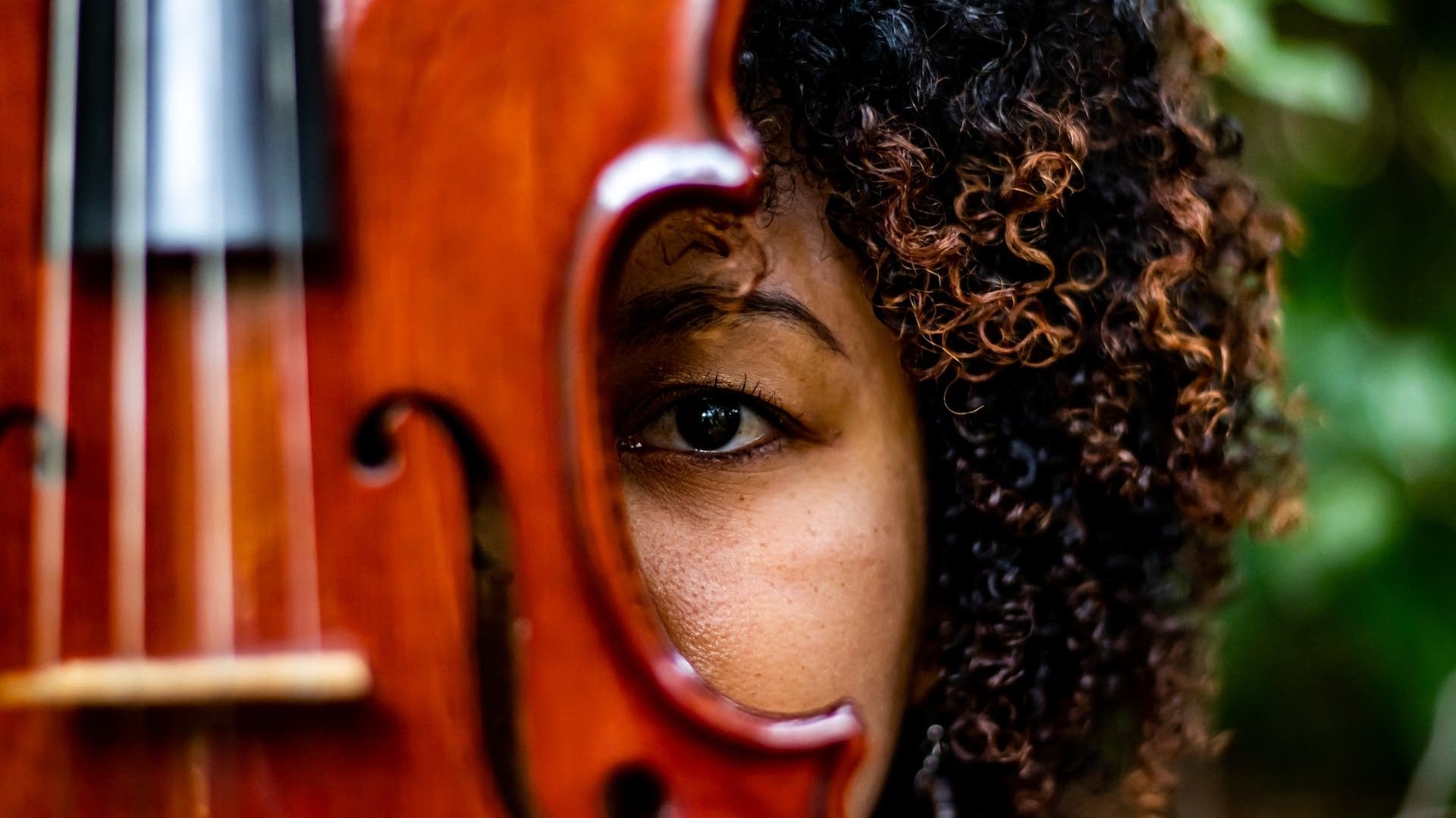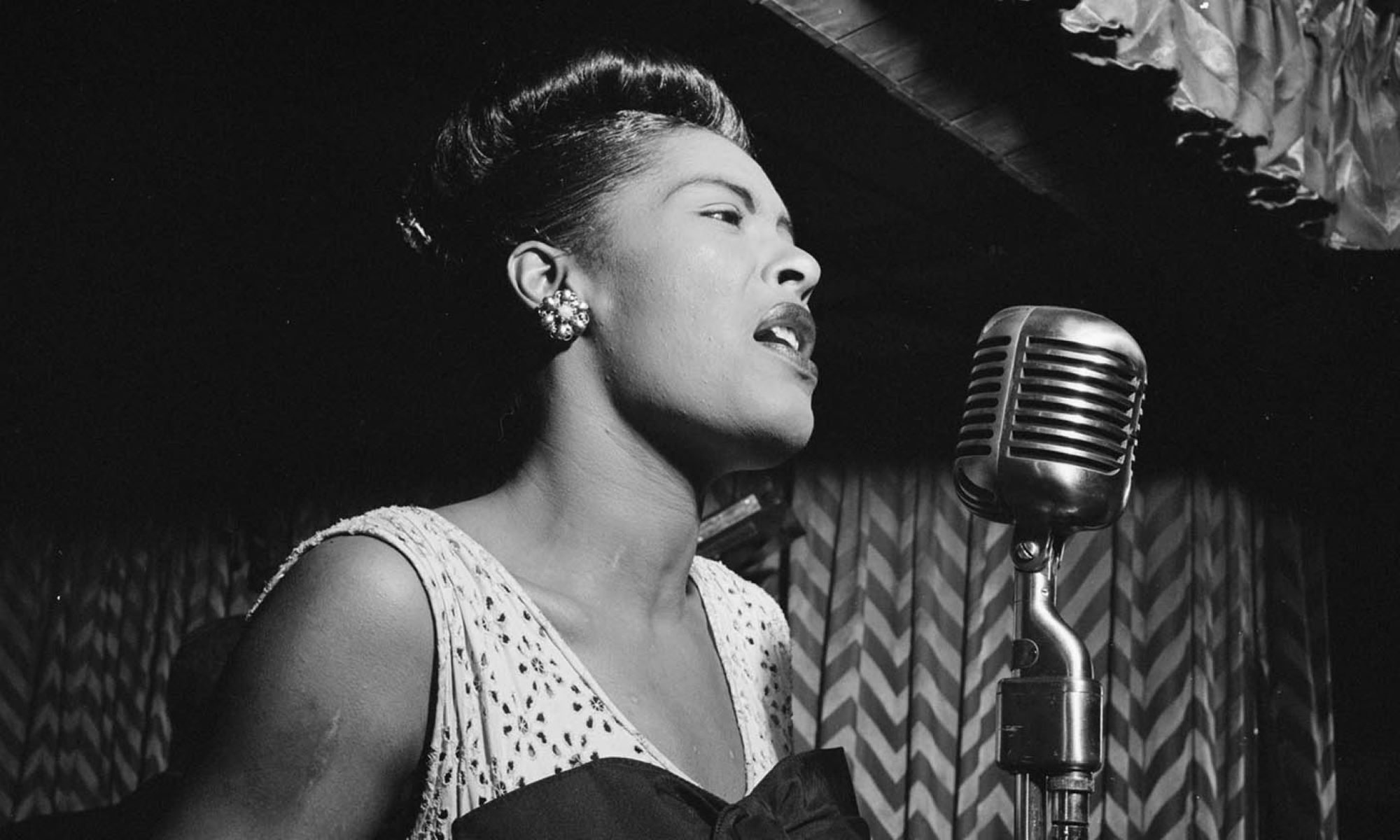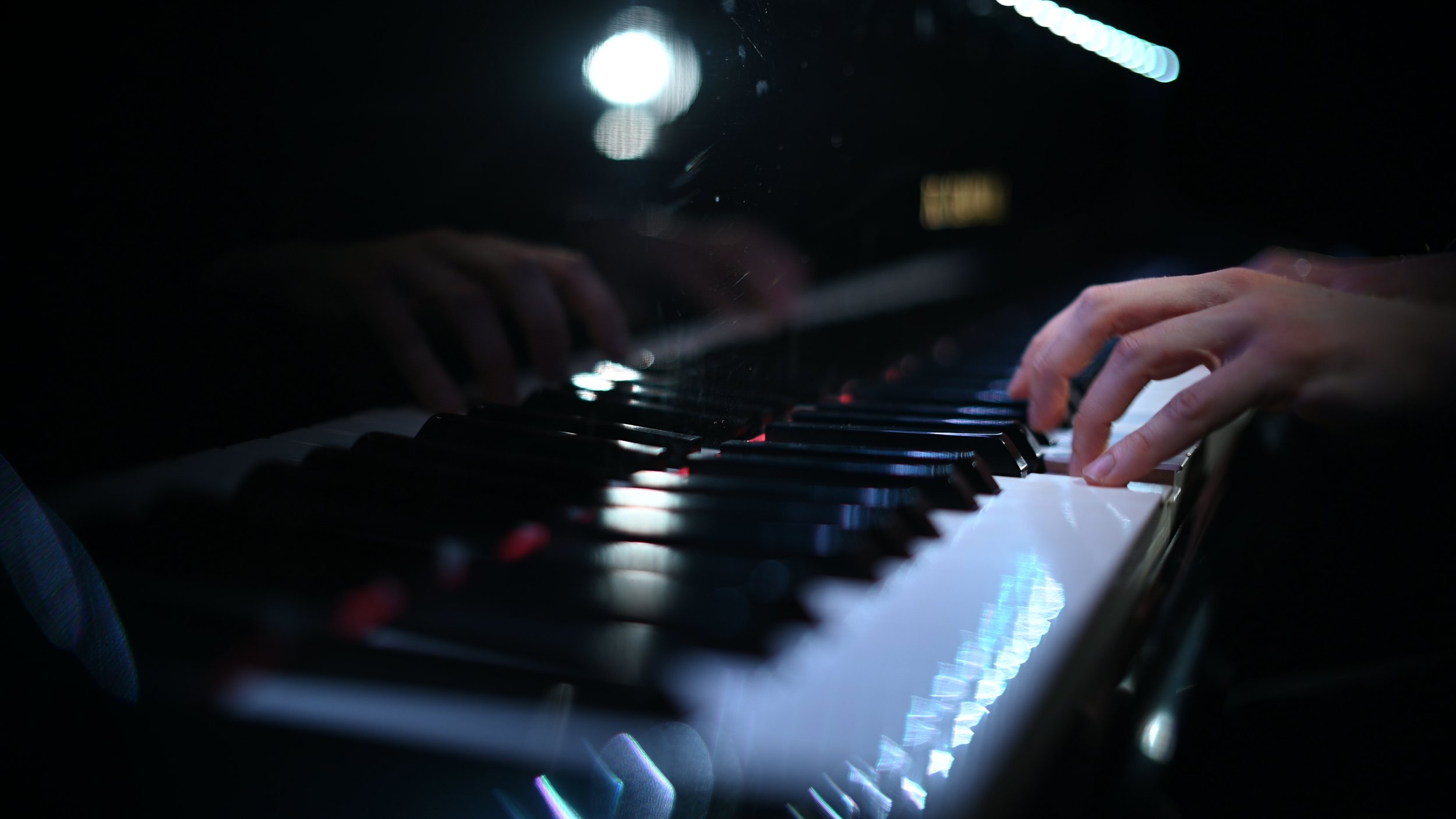

Jazz
How Popular Is Jazz
Modified: January 22, 2024
Discover the popularity of jazz and its impact on music lovers worldwide. Explore the rich history and diverse subgenres of jazz that continue to captivate audiences.
(Many of the links in this article redirect to a specific reviewed product. Your purchase of these products through affiliate links helps to generate commission for AudioLover.com, at no extra cost. Learn more)
Table of Contents
Introduction
Welcome to the enchanting world of jazz, a genre of music that encapsulates the rich history and creative spirit of the African American culture. With its roots deeply entrenched in the African diaspora and the American experience, jazz has become a global phenomenon that continues to captivate audiences around the world. From its humble beginnings in the late 19th century to its evolution into various subgenres, jazz has left an indelible mark on the music industry and popular culture as a whole.
Jazz is a unique art form that combines elements of African rhythms, European harmonies, and improvisation. It emerged in the early 20th century in the African American communities of New Orleans, Louisiana. The deep emotional expression and complex musical techniques of jazz served as a creative outlet for African Americans to express their experiences and struggles in a racially divided society.
Over the years, jazz has evolved and branched out into various styles and subgenres, including swing, bebop, cool jazz, fusion, and many more. Each style represents a different era and reflects the cultural and societal changes that shaped the music during that time. Whether it’s the toe-tapping rhythms of swing or the complex harmonies of bebop, jazz has an uncanny ability to evoke a wide range of emotions and connect with people on a profound level.
Throughout its history, jazz has had a profound influence on popular music. Its syncopated rhythms, sophisticated harmonies, and emphasis on improvisation have seeped into various genres, including rock, pop, and hip hop. Many iconic musicians, such as Louis Armstrong, Duke Ellington, and Charlie Parker, have paved the way for future generations of artists and left an indelible mark on the music industry.
In this article, we will delve into the fascinating world of jazz, from its origins and influential figures to its current status in contemporary music. We will explore the global appeal of jazz, its impact on popular culture, and the vibrant jazz festivals and events that celebrate this beloved genre. Whether you’re a long-time jazz enthusiast or a newcomer eager to learn more, join us on this journey through the captivating world of jazz.
A Brief History of Jazz
Jazz is a musical genre that originated in the early 20th century in the African American communities of New Orleans, Louisiana. Its roots can be traced back to the fusion of African rhythms and European harmonic structures, brought together by the descendants of enslaved Africans and their interactions with Creole, Cajun, and European immigrants.
The early form of jazz, known as “New Orleans Jazz,” emerged in the late 1800s and was characterized by its lively rhythms, syncopation, and improvisation. Musicians often played in small ensembles, incorporating instruments such as trumpets, clarinets, trombones, and pianos, along with the distinctive rhythm section consisting of a bass, drums, and banjo or guitar.
As jazz spread beyond New Orleans, it underwent significant changes and developed several distinct styles. In the 1920s, the era known as the “Jazz Age” or the “Roaring Twenties,” jazz experienced a surge in popularity. This period saw the rise of big bands and the advent of the swing era, with artists like Duke Ellington, Count Basie, and Benny Goodman gaining widespread recognition.
The 1940s witnessed the emergence of bebop, a style characterized by complex harmonies, fast tempos, and intricate improvisation. Musicians such as Charlie Parker, Dizzy Gillespie, and Thelonious Monk pushed the boundaries of jazz, challenging conventions and creating a more intellectual and experimental form of expression.
In the 1950s and 1960s, jazz further evolved with the development of cool jazz, hard bop, and modal jazz. Artists like Miles Davis, John Coltrane, and Dave Brubeck explored new tonalities, modal scales, and extended improvisations, pushing the boundaries of the genre and incorporating elements of other musical traditions.
The 1970s and 1980s brought the fusion era, blending jazz with elements of rock, funk, and electronic music. Musicians such as Herbie Hancock, Weather Report, and Chick Corea experimented with synthesizers, electric guitars, and fusion of different genres, attracting a wider audience beyond traditional jazz enthusiasts.
Since then, jazz has continued to evolve and adapt to the changing musical landscape. Today, we see a diverse range of styles and subgenres, from smooth jazz and Latin jazz to contemporary and avant-garde jazz. Modern jazz artists such as Esperanza Spalding, Kamasi Washington, and Robert Glasper are pushing the boundaries of jazz, incorporating elements of hip hop, soul, and electronic music into their compositions.
Despite these developments, the core elements of jazz remain unchanged. Improvisation, syncopation, and a deep sense of groove continue to define the genre, allowing musicians the freedom to express themselves and create unique, spontaneous performances.
As we explore the rich history of jazz in this article, we will delve deeper into the influential figures, the impact on popular music, and the vibrant jazz festivals and events that celebrate and showcase this dynamic genre.
Influence of Jazz on Popular Music
Jazz has had a profound influence on popular music throughout its history, shaping and inspiring countless artists and genres across the musical spectrum. The syncopated rhythms, complex harmonies, and improvisational nature of jazz have left an indelible mark on the world of music.
One major area where jazz has made its mark is in the realm of popular vocal music. Artists such as Frank Sinatra, Ella Fitzgerald, and Nat King Cole have all been heavily influenced by jazz and incorporated its elements into their singing styles. The use of improvisation, swinging rhythms, and melodic variations are characteristics that stem from jazz and can be heard in the vocal performances of these iconic artists.
The impact of jazz on instrumental music is also significant. Jazz introduced innovative techniques such as improvisation, complex chord progressions, and extended solos that became an integral part of popular instrumental music styles like rock, funk, and soul. Musicians like Jimi Hendrix, James Brown, and Stevie Wonder drew inspiration from jazz and incorporated its elements into their compositions and performances.
The influence of jazz can also be seen in the development of genres such as Latin jazz, which fuses Latin rhythms and instrumentation with jazz harmonies and improvisation. Artists like Tito Puente, Cal Tjader, and Chucho Valdés have expanded the boundaries of jazz by incorporating Afro-Cuban, Brazilian, and other Latin American musical traditions.
Furthermore, the advent of jazz fusion in the 1970s and 1980s brought a new wave of experimentation and fusion with other genres. Artists such as Herbie Hancock, Weather Report, and Chick Corea blurred the lines between jazz, rock, funk, and electronic music, creating a sound that appealed to a broader audience. This fusion of genres paved the way for the development of contemporary genres like acid jazz, electronic jazz, and nu jazz.
Jazz has not only influenced individual artists, but it has also shaped the way music is composed and performed. The concept of improvisation, where musicians create on-the-spot melodies and harmonies, has seeped into other genres, allowing musicians to express their creativity in real-time performances. The use of extended chord progressions and unconventional harmonies in jazz has expanded the possibilities for songwriters and composers, creating a more sophisticated and nuanced approach to popular music composition.
Overall, the influence of jazz on popular music is undeniable. From vocal styles to instrumental techniques, from Latin fusion to electronic experimentation, jazz has permeated the fabric of the music we hear today. Its innovation, creativity, and boundary-pushing nature continue to inspire and shape the ever-evolving world of popular music.
Jazz Musician Legends
Jazz has produced a plethora of legendary musicians who have pushed the boundaries of the genre and left an indelible mark on the history of music. These exceptional artists have not only made significant contributions to jazz but have also influenced the entire landscape of popular music. Let’s explore some of the jazz musician legends who have shaped the course of this captivating genre.
Louis Armstrong, often referred to as the “Father of Jazz,” is one of the most iconic figures in jazz history. His innovative trumpet playing, unique vocal style, and charismatic stage presence revolutionized jazz and propelled it into the mainstream. With songs like “What a Wonderful World” and “Hello, Dolly!,” Armstrong’s influence extended far beyond the realm of jazz and continues to inspire musicians today.
Duke Ellington is another towering figure in jazz. As a composer, pianist, and bandleader, Ellington pushed the boundaries of jazz composition, blending diverse influences ranging from classical music to African rhythms and creating a distinctive sound. His compositions, such as “Take the ‘A’ Train” and “Mood Indigo,” are timeless classics that have become integral parts of the jazz repertoire.
Charlie Parker, known as “Bird,” was a trailblazing saxophonist and composer who was at the forefront of the bebop movement. His virtuosic improvisations and innovative harmonic ideas transformed the jazz landscape and set new standards for technical proficiency. Parker’s recordings, including “Ornithology” and “Confirmation,” remain iconic examples of bebop’s complex and exhilarating style.
John Coltrane, often regarded as one of the most influential saxophonists in jazz history, pushed the boundaries of the genre with his innovative playing and spiritual approach to music. Coltrane’s compositions, such as “Giant Steps” and “A Love Supreme,” showcase his mastery of improvisation and his commitment to using music as a means of transcendence and spiritual expression.
Ella Fitzgerald, known as the “First Lady of Song,” revolutionized vocal jazz with her impeccable technique, swinging phrasing, and ability to scat. Her warm and expressive voice, combined with her innate musicality, made her an unparalleled interpreter of the Great American Songbook. Songs like “Summertime” and “Mack the Knife” have become definitive versions of jazz standards.
These jazz musician legends represent just a fraction of the incredible talent that has graced the genre. Artists like Miles Davis, Billie Holiday, Thelonious Monk, and Sarah Vaughan have also made lasting contributions to jazz, each with their unique style and artistic vision.
The legacies of these jazz musician legends continue to inspire and resonate with musicians and audiences alike. Their innovation, virtuosity, and artistic vision have shaped the course of jazz and influenced the entire landscape of popular music. Their timeless recordings serve as a testament to the enduring power and beauty of jazz as an art form.
Contemporary Jazz Artists
While the jazz tradition is rich with legendary figures, it is also thriving with a new generation of contemporary jazz artists who continue to push the genre forward. These innovative musicians bring fresh perspectives and influences from various genres, incorporating elements of hip hop, electronica, world music, and more. Let’s explore some of the notable contemporary jazz artists who are making their mark on the jazz scene today.
Esperanza Spalding is a versatile bassist, vocalist, and composer who has garnered critical acclaim for her eclectic musical approach. Blending elements of jazz, soul, and R&B, Spalding has captivated audiences with her vibrant and energetic performances. Her album “Chamber Music Society” won the Best Jazz Vocal Album Grammy in 2011, making her the first jazz artist to win in this category.
Kamasi Washington is a saxophonist and composer whose modern take on jazz has earned him a reputation as one of the most exciting and innovative artists in the genre. His album “The Epic” received widespread acclaim for its fusion of jazz, funk, and gospel, showcasing Washington’s virtuosic playing and his ability to create expansive and immersive musical journeys.
Robert Glasper is a pianist and producer known for his ability to seamlessly blend jazz with hip hop, R&B, and electronic music. His album “Black Radio” won the Grammy for Best R&B Album in 2013, and its follow-up, “Black Radio 2,” further solidified his reputation as a boundary-pushing artist. Glasper’s collaborations with artists like Kendrick Lamar and Erykah Badu have bridged the gap between jazz and contemporary popular music.
Hiromi Uehara, known simply as Hiromi, is a Japanese pianist and composer who has gained international acclaim for her virtuosic playing and boundless energy. Her dynamic performances and genre-blending approach have attracted a wide audience beyond traditional jazz fans. Hiromi’s fusion of jazz, classical, and rock influences creates a unique and electrifying sound that continues to resonate with listeners.
Snarky Puppy, a collective of musicians led by bassist Michael League, has redefined the contemporary jazz landscape with their fusion of jazz, funk, and world music. Through their intricate compositions and powerful live performances, Snarky Puppy has gained a dedicated following and won numerous Grammy Awards. Their ability to seamlessly blend complex instrumental arrangements with infectious grooves has made them a standout group in today’s jazz scene.
These are just a few examples of the incredibly talented contemporary jazz artists who are shaping the future of the genre. With their unique musical visions and innovative approaches, they continue to expand the boundaries of jazz and attract new audiences. As these artists gain recognition and influence, they ensure that jazz remains a vibrant and evolving art form that resonates with listeners of all backgrounds.
Jazz Festivals and Events
Jazz festivals and events provide a vibrant platform for jazz enthusiasts and musicians to come together and celebrate the power and beauty of this dynamic genre. These gatherings showcase a diverse range of jazz styles and provide opportunities for both established and emerging artists to share their music with the world. Let’s explore some of the most renowned jazz festivals and events that captivate audiences around the globe.
The Montreux Jazz Festival, held annually in Montreux, Switzerland, is one of the most prestigious and long-standing jazz festivals in the world. Established in 1967, it has featured performances by legendary jazz artists such as Miles Davis, Ella Fitzgerald, and Ray Charles. Today, the Montreux Jazz Festival attracts a wide range of genres, including jazz, blues, rock, and pop, making it a diverse musical celebration that draws thousands of music lovers from around the world.
The Monterey Jazz Festival, founded in 1958, is an iconic event that takes place in Monterey, California. Known for its rich history and commitment to showcasing the best in jazz, the festival has featured legendary jazz figures like Duke Ellington, Thelonious Monk, and Dave Brubeck. The Monterey Jazz Festival continues to uphold its tradition of excellence, offering a weekend filled with exceptional performances across multiple stages, educational activities, and a welcoming atmosphere for jazz enthusiasts of all ages.
The North Sea Jazz Festival, held in Rotterdam, Netherlands, is one of Europe’s largest and most renowned jazz festivals. Since its inception in 1976, it has brought together jazz, soul, funk, and other related genres, showcasing international jazz legends and emerging talents. The festival includes performances on multiple stages, workshops, and exhibitions, creating a diverse and immersive experience for jazz aficionados and music lovers alike.
Another notable event is the New Orleans Jazz & Heritage Festival, often referred to as Jazz Fest. Founded in 1970, this iconic festival celebrates the vibrant music and culture of New Orleans. Jazz Fest features a wide range of genres, including jazz, blues, gospel, Cajun, and zydeco, with performances by both local musicians and international stars. The festival also pays homage to the cultural heritage of New Orleans through art exhibits, traditional crafts, and local cuisine, making it a unique and immersive experience.
In addition to these major festivals, numerous other jazz events and gatherings take place across the globe. From the Istanbul Jazz Festival in Turkey to the Tokyo Jazz Festival in Japan, these events serve as important platforms for showcasing local talent, fostering cultural exchange, and building a global jazz community.
Jazz festivals and events not only provide a platform for musicians to showcase their talent, but also create opportunities for collaboration, innovation, and inspiration. Whether it’s a small local festival or a global event, these gatherings play a crucial role in preserving the legacy of jazz, showcasing its evolution, and bringing together people from different backgrounds to celebrate the art form that continues to captivate audiences worldwide.
The Global Appeal of Jazz
Jazz, with its soulful melodies, complex harmonies, and vibrant improvisation, has a universal appeal that transcends cultural boundaries and connects with audiences around the world. From its humble origins in the African American communities of the United States, jazz has spread its influence across continents, blending with local musical traditions and captivating listeners of diverse backgrounds. Let’s explore the global appeal of jazz and its impact on different cultures.
Jazz’s global reach can be attributed to its ability to incorporate and adapt to various musical styles and traditions. As the genre traveled beyond its birthplace, it fused with local music traditions in different parts of the world. In Europe, for example, jazz merged with the classical music tradition, resulting in the emergence of styles like cool jazz and European jazz. Artists such as Django Reinhardt and Stephane Grappelli blended jazz with gypsy swing, creating a unique sound that resonated with European audiences.
Latin America also embraced jazz, infusing it with Afro-Cuban rhythms and creating a distinctive style known as Latin jazz. Artists like Tito Puente, Dizzy Gillespie, and Arturo Sandoval brought together jazz and Latin music, captivating listeners with their infectious rhythms and vibrant improvisations. Today, Latin jazz continues to thrive, attracting audiences around the world with its energy and passion.
In Asia, jazz has found a dedicated following and has been integrated into local musical traditions. In Japan, for example, jazz became popular after World War II and gave rise to a vibrant jazz scene. Japanese artists like Toshiko Akiyoshi, Takeshi Yamaguchi, and Hiromi Uehara have garnered international acclaim, infusing jazz with their own unique cultural influences.
Africa, the birthplace of jazz’s rhythmic roots, has seen jazz evolve and blend with local styles to create vibrant hybrid genres. African jazz artists, such as Hugh Masekela from South Africa and Manu Dibango from Cameroon, have incorporated indigenous rhythms and melodies into their music, forging a connection between jazz and Africa’s rich musical heritage.
Furthermore, jazz festivals and events around the world have played a vital role in promoting and fostering the global appeal of jazz. These gatherings bring together musicians from different countries and provide a platform for cultural exchange and collaboration. They celebrate the diversity of jazz styles and showcase the talent of both established and emerging artists.
The global appeal of jazz also extends beyond geographical boundaries. Jazz has permeated popular music genres, influencing artists from diverse backgrounds. Its influence can be heard in the improvisational nature of rock, the syncopation of funk, and the complex harmonies of R&B. From David Bowie to Amy Winehouse, many popular artists have drawn inspiration from jazz in their own musical expressions.
Ultimately, jazz’s global appeal lies in its ability to evoke emotions, tell stories, and create connections. Its spirit of improvisation and artistry resonates with people worldwide, inviting them to be part of an ever-evolving musical conversation. As jazz continues to adapt and thrive in different cultural contexts, its universal language continues to unite and inspire music lovers across the globe.
Jazz Education and Institutions
Jazz education plays a crucial role in preserving and promoting the rich heritage of this genre, nurturing future generations of musicians, and ensuring its continued growth and innovation. From dedicated jazz schools to jazz workshops and programs, a wide range of educational institutions and initiatives provide aspiring musicians with the knowledge, skills, and opportunities to excel in the world of jazz.
One notable institution is the Berklee College of Music in Boston, Massachusetts. Founded in 1945, Berklee has become one of the leading institutions for contemporary music education, including jazz. Berklee offers a comprehensive jazz curriculum, covering areas such as performance, composition, arranging, and improvisation. The college has produced many successful jazz musicians, including Branford Marsalis, Terri Lyne Carrington, and Esperanza Spalding.
The Juilliard School in New York City is another prestigious institution that offers world-class jazz education. With its renowned Jazz Studies program, Juilliard provides a rigorous curriculum that emphasizes both performance and composition. Juilliard Jazz consistently produces exceptional talent, contributing to the development and advancement of the jazz tradition.
Additionally, many universities and colleges around the world offer jazz programs and degrees. These institutions provide aspiring jazz musicians with opportunities to study the history, theory, and practice of jazz, fostering their artistic growth and preparing them for careers in the music industry. Jazz programs at universities like Indiana University, University of North Texas, and The Royal Academy of Music in London are highly respected and have produced numerous successful jazz musicians.
Jazz workshops and festivals are also essential in jazz education. These events provide aspiring musicians with the opportunity to learn from and interact with established jazz professionals. Workshops like the Stanford Jazz Workshop in California and the Jamey Aebersold Summer Jazz Workshops offer intensive training and mentorship, helping participants develop their skills and gain invaluable insights into the world of jazz.
Besides formal institutions, jazz education also extends to community organizations and initiatives. Non-profit organizations like Jazz at Lincoln Center in New York City and Wynton Marsalis’ Jazz Academy actively engage with communities, providing educational programs, workshops, and performances that promote jazz appreciation and understanding among people of all ages and backgrounds.
Jazz education is not solely limited to formal settings. The tradition of mentorship plays a vital role in passing down knowledge and skills from seasoned jazz musicians to aspiring artists. Throughout history, many accomplished jazz musicians have shared their expertise and guided young talents through private lessons, masterclasses, and jam sessions, ensuring the continuation of the jazz tradition.
Overall, jazz education and institutions play an essential role in preserving the legacy of jazz, nurturing talent, and fostering innovation in the genre. These educational initiatives provide aspiring musicians with opportunities for growth and development, ensuring that jazz remains vibrant and relevant for generations to come.
Popular Jazz Styles and Subgenres
Jazz is a genre known for its versatility and ability to evolve and embrace a wide range of musical influences. Over the years, various jazz styles and subgenres have emerged, each with its own distinctive characteristics and contributions to the overall jazz landscape. Let’s explore some of the popular jazz styles and subgenres that have shaped the genre throughout its rich history.
1. Swing: Swing is a joyful and energetic style that emerged in the 1930s and became immensely popular during the swing era. It is characterized by its lively rhythms, syncopation, and big band instrumentation. Swing music, with artists like Count Basie and Benny Goodman, inspired people to dance and brought jazz into the mainstream.
2. Bebop: Bebop, born in the 1940s, marked a significant shift in the jazz scene. Bebop musicians, such as Charlie Parker and Dizzy Gillespie, embraced complex harmonies, fast tempos, and intricate improvisation. With its emphasis on instrumental virtuosity, bebop pushed the boundaries of jazz and set the stage for future innovations.
3. Cool Jazz: Cool jazz emerged in the late 1940s and early 1950s as a reaction to the intensity of bebop. It exudes a calmer and more subdued atmosphere, emphasizing slower tempos, intricate arrangements, and relaxed improvisation. Miles Davis and the Modern Jazz Quartet are notable figures associated with this smooth and sophisticated style.
4. Hard Bop: Hard bop, which gained prominence in the 1950s and 1960s, infused jazz with elements of gospel, blues, and R&B. It was characterized by its soulful and powerful sound, with artists like Art Blakey, Horace Silver, and Cannonball Adderley leading the charge. Hard bop emphasized strong rhythm sections, bluesy melodies, and dynamic improvisation.
5. Modal Jazz: Modal jazz, popularized by Miles Davis with his album “Kind of Blue,” emerged in the late 1950s and early 1960s. It moved away from traditional chord progressions and focused on exploring extended modal scales and a more open approach to improvisation. Modal jazz created a spacious and contemplative sound, allowing for greater freedom and experimentation.
6. Fusion: Fusion emerged in the 1970s, blending elements of jazz with rock, funk, and other genres. Musicians like Miles Davis, Weather Report, and Herbie Hancock experimented with electric instruments, synthesizers, and new technologies, resulting in a fusion of diverse musical styles. Fusion jazz incorporated intricate rhythms, extended improvisations, and a more accessible and commercial sound.
7. Latin Jazz: Latin jazz combines jazz improvisation with Latin American rhythms and instrumentation. Artists like Tito Puente, Cal Tjader, and Chucho Valdés have fused jazz harmonies with Afro-Cuban, Brazilian, and other Latin American musical traditions. Latin jazz is characterized by its infectious and vibrant rhythms, captivating audiences with its irresistible energy.
8. Contemporary and Avant-Garde Jazz: These styles encompass a wide range of experimental and innovative approaches to jazz. Contemporary jazz incorporates elements from various genres, such as rock, pop, and electronic music, pushing the boundaries of the genre. Avant-garde jazz pioneers, like John Coltrane and Ornette Coleman, challenged conventions with their unconventional playing techniques, abstract compositions, and freeform improvisation.
These are just a few of the popular jazz styles and subgenres that have emerged throughout jazz’s rich history. Each style represents a different era and contributes to the ever-evolving tapestry of jazz. The beauty of jazz lies in its ability to embrace a multitude of influences and maintain its spirit of creativity and improvisation, ensuring its continued relevance and innovation in the world of music.
Jazz in Film and Television
Jazz has played a significant role in the world of film and television, both as a subject and as a soundtrack. Its vibrant and emotional qualities have made jazz an ideal accompaniment to on-screen stories, while films and TV shows have also provided a platform for highlighting the rich history and cultural impact of jazz. Let’s explore the influence of jazz in film and television.
Jazz has been a popular choice for film soundtracks, enhancing the mood and adding authenticity to period pieces set in the early to mid-20th century. Films like “The Great Gatsby,” “Chicago,” and “La La Land” have utilized jazz music to transport viewers to the era of speakeasies, swing dancing, and the golden age of jazz. These films not only feature jazz as part of the narrative but also celebrate the energy, emotion, and allure of the music.
Some films have delved deeper into the lives and stories of jazz musicians themselves. Biographical films like “Ray,” “Bird,” and “Round Midnight” have shed light on the personal lives, struggles, and musical achievements of iconic jazz artists. These films provide insight into the creative process, the influence of jazz on the individual, and the impact that these musicians had on the evolution of the genre.
Television shows have also embraced jazz as a way to set a particular mood or create a specific atmosphere. Shows like “Mad Men,” set in the 1960s advertising world, utilize jazz music to underscore the sophistication, glamour, and intrigue of the era. Jazz can evoke a sense of nostalgia and authenticity, transporting viewers to a specific time and place.
Furthermore, jazz has provided the inspiration for original television series centered around the music itself. “Treme,” set in post-Hurricane Katrina New Orleans, revolves around the lives of musicians in the city’s vibrant jazz scene. The show not only features performances by renowned jazz artists but also explores the cultural significance of jazz and its role in the rebuilding of the community.
Jazz documentaries have become a vital medium for educating audiences on the history, impact, and cultural importance of the genre. Films like “Ken Burns’ Jazz” and “Time Remembered: The Life and Music of Bill Evans” delve into the lives of jazz musicians, their artistic contributions, and the social and political context in which they created their music. These documentaries not only entertain but also educate viewers, shedding light on the cultural and historical significance of jazz.
Overall, jazz has greatly enriched the world of film and television, providing a powerful and evocative soundtrack while also serving as a subject of exploration and celebration. Whether used as a backdrop to enhance the narrative or as a central focus to delve into the lives of jazz musicians, jazz in film and television allows audiences to experience the energy, emotion, and cultural impact of this extraordinary genre.
Conclusion
Jazz, with its rich history, diverse styles, and global appeal, stands as a powerful and enduring musical genre. From its origins in the African American communities of New Orleans to its influence on popular music worldwide, jazz continues to captivate audiences and push the boundaries of artistic expression.
Through the innovative improvisation, syncopated rhythms, and complex harmonies of jazz, musicians have created a genre that speaks to the soul, evoking emotions and connecting people across cultural and geographical divides. The legends of jazz, from Louis Armstrong and Duke Ellington to Charlie Parker and Ella Fitzgerald, have left an indelible mark on the genre and inspired countless musicians.
The global reach of jazz is evident in its influence on popular music, where its syncopation, improvisation, and harmonies can be heard in various genres from rock and R&B to hip hop and beyond. Jazz education and institutions play a vital role in preserving the legacy of jazz, nurturing future talent, and ensuring its continued growth and innovation.
Jazz festivals and events provide platforms for artists to showcase their skill and celebrate the genre, immersing audiences in the infectious rhythms and spirited performances. These gatherings bring together musicians from various backgrounds, fostering cultural exchange and collaboration.
Jazz in film and television adds an extra layer of depth and emotion to narratives, showcasing the timelessness and versatility of the music. Whether as a soundtrack or as a subject, jazz allows us to experience the glamour of bygone eras, the struggles and triumphs of jazz musicians, and the vibrant energy that permeates the genre.
In conclusion, jazz stands as a testament to the power of human creativity, cultural exchange, and artistic exploration. Its ability to evolve while maintaining its core identity has allowed it to resonate with audiences around the world. Jazz continues to inspire, connect, and transcend boundaries, making a profound impact on the world of music and leaving an enduring legacy for generations to come.

